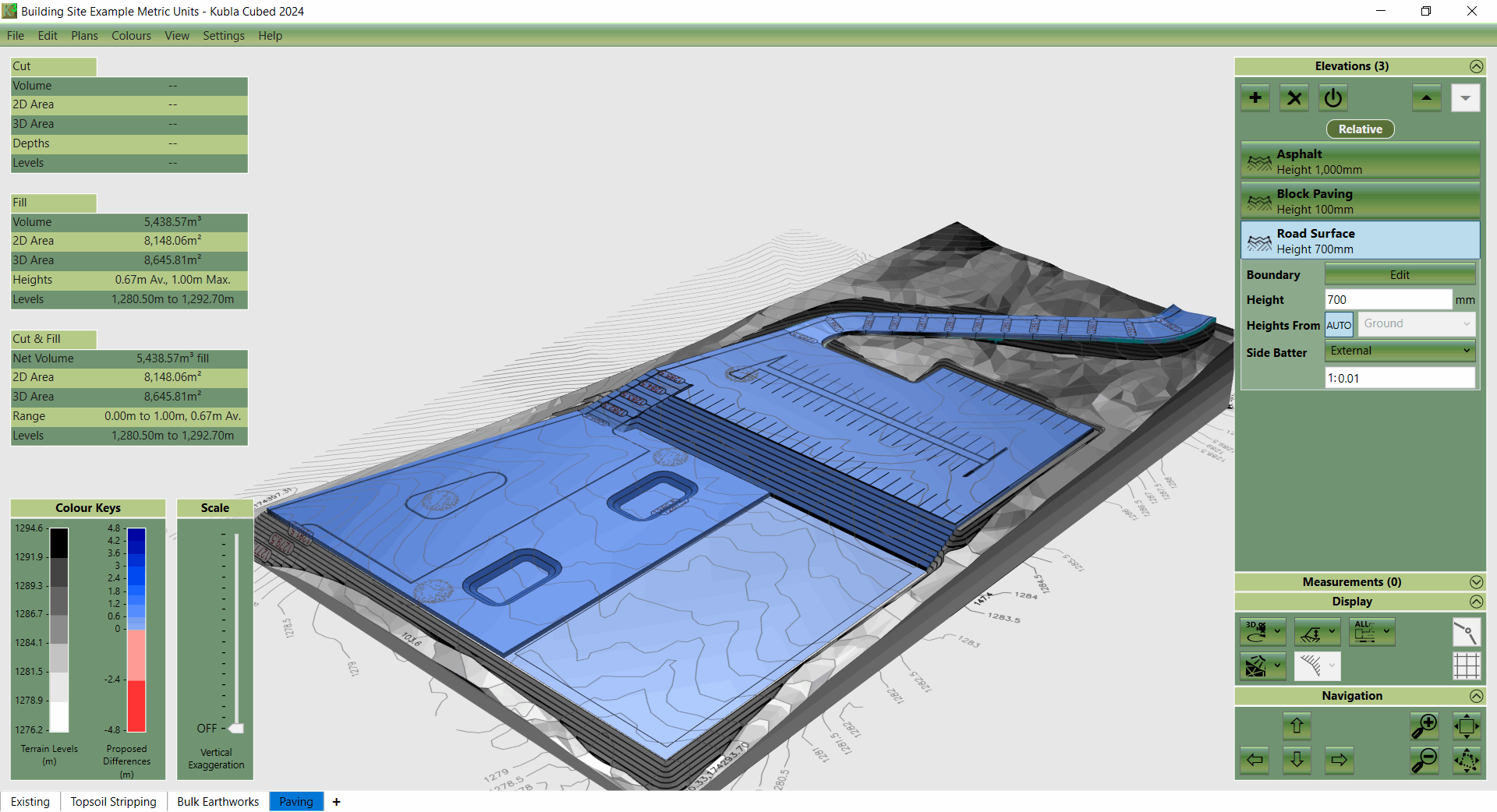Rather than taking areas and then multiplying then by paving thickness to calculate the volume of paving, modeling the paving using earthworks elements can be beneficial. Although this method might be a bit slower than using areas reported in previous phases, it does have the advantage of resulting in the last phase of your project built up to finished level. This is useful for checking your site, as you can perform spot checks or cross sections to verify the elevations reported from the model against the site plan (site plans almost always show FFL levels).
To complete paving calculations using Kubla Cubed’s modelling tools, a process similar to completing a topsoil strip in reverse is applied:
- Define paving in its own phase by creating a new phase named 'Paving' or a similar designation.
- Use 'Raise' elements with a height set to the overall thickness of paving. If 'Raise' elements overlap, they will override each other. In cases of intersection, the depth in the lower element in the calculation order takes precedence.
- Ensure that the 'Raise' element has the 'Heights From' property set to 'Ground' (the default) if there are no absolute elements above in the calculation order. It is not recommended to change these options from the default settings or use absolute elements in a paving phase to maintain consistent behavior of 'Raise' elements overriding each other.

Paving volumes calculated using 'Raise' elements, with the lower element in the calculation order taking precedence at intersections (using default settings).